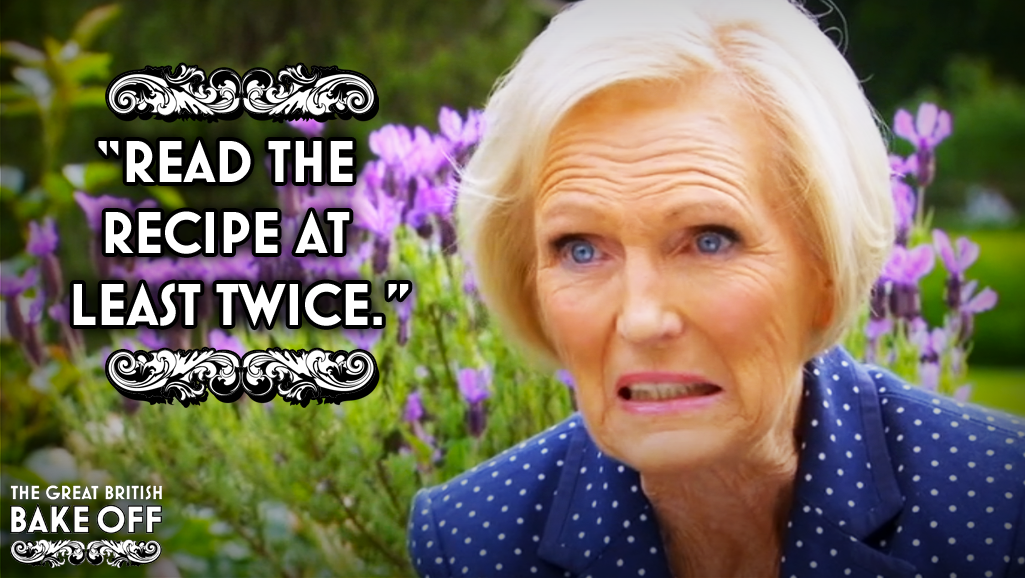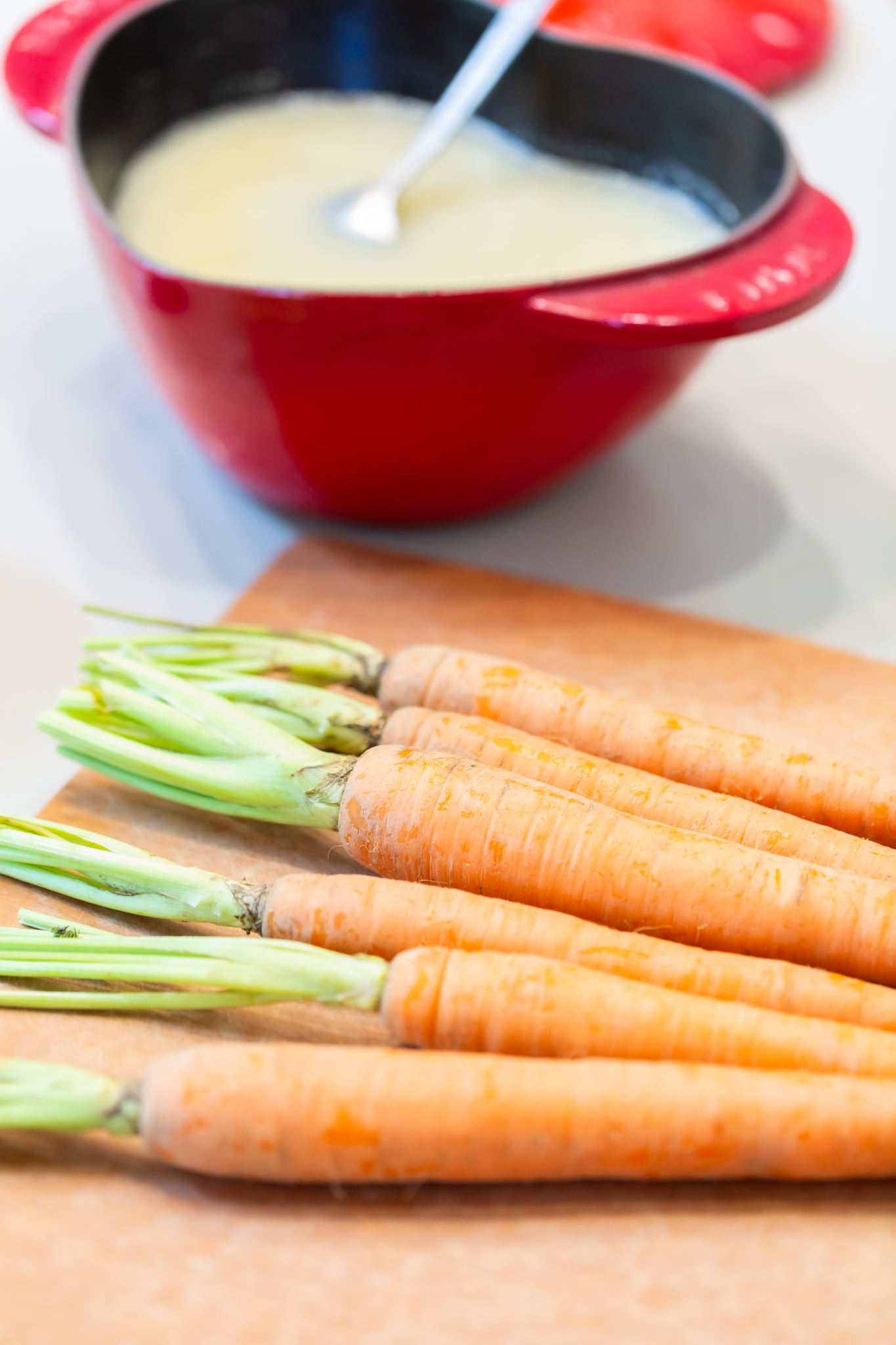How to Read a Recipe: Four Tips to Help You Relax and Enjoy Cooking at Home
Since Cooking Beautiful Lee was born, I've shared many recipes on my blog, and yet I have never explained how to read a recipe. When I first started to teach, I assumed students knew how to read a recipe. I thought my job would be to jump in when they had questions regarding a specific step. If they needed help dicing an onion, for example, I would help them.
I was wrong. A lot of people don't know how to read a recipe. No matter how well a recipe is written, it doesn't guarantee success and efficiency. You may think the more detailed a recipe is written, the better. Not really. A lot of time, I see students get lost in the words.
Have you ever try to follow a recipe and then suddenly can't remember which step you're doing? Have you ever read a recipe and wondered why you have to go through certain steps and wondered if there was a way to cut corners? Have you given up on making a dish simply because the list of ingredients was overwhelming? Over the years, I have become an expert at reading recipes, and I have some tips for you that I hope it will be helpful.

Tip Number One: Rewrite the Recipe Using Simple Steps
This is the most important step for you when you read a recipe. When you rewrite a recipe with simple steps, you think through each step and rehearse them in your mind. This will help you to cook more efficiently since you know what the next step is and can move on quickly. Let me give you an example. Here is the preparation part of Chef Joanne's "Flour's Famous Banana Bread" recipe.
- Set oven to 350 degrees F. Line the bottom of a loaf pan with parchment paper.
- Sift together the flour, baking soda, cinnamon and salt. Beat sugar and eggs with a whisk until light and fluffy, about 10 minutes. Drizzle in oil. Add mashed bananas, crème fraiche, and vanilla. Fold in dry ingredients and nuts. Pour into a lined loaf pan and bake for about 45 minutes to 1 hour.
I would rewrite the recipe:
- Oven 350 degree. Parchment paper + loaf pan
- Dry ingredients: flour, baking soda, cinnamon, salt => whisk
- Beat sugar + eggs => light + fluffy
- + oil
- + mashed bananas + crème fraiche + vanilla
- + dry ingredients + nuts
- bake until done
Once you rewrite the recipe, it is clear that you can prepare all the dry ingredients in one bowl. Sugar and eggs are in one bowl. Mashed banana, cream fraiche, and vanilla are in another bowl. Oil is in a measuring cup. Chopped nuts are in a bowl. Knowing this will allow you to prep more efficiently and neatly.
Tip Number Two: Recipes Are for Reference Only
There is no need to read a recipe like a Bible. Jesus said he is the way and the door, but when it comes to cooking and baking, there are more than one way and one door to get to a great end result. How you can tell a chef from a cook? A chef has the ability to read a recipe in a critical way and tweak it so the end product will be done to his or her liking.
Let's look at the banana bread recipe. The second step is to sift the dry ingredients—but what if you don't have a sifter at home? You don't have to run to Target just to get a sifter! All you need is a whisk and mix the dry ingredients thoroughly. I have skipped sifting for many recipes, and the end products always come out great.
A question a student may ask me regarding this recipe is, "How long should I bake the banana bread? What does 45 minutes to an hour mean?" While at culinary school, I asked Chef Delphin, "How long should I bake the bread?" He said, "Bake until it's done." Ever since then, whenever a student asks me how long they should bake the pastry, I always say, "Bake until it's done." Indeed!
There is no answer to that question. Cooking time will vary depending on the size and shape of the pan. The time will vary if you used a loaf pan or muffin pan or mini muffin pan. The time varies depending on how powerful your oven is.
You'll discover the correct cooking time by constantly checking on your product. Rotate the sheet pan, so the bread is baked evenly. Stick a toothpick in your bread, and when it comes out clean, it's done. You can also gently touch the surface of your bread. When it's done, it will be springy and bounce back.

Tip Number Three: Keep Calm and Mise En Place
Mise en placeis a French culinary phrase that means "putting in place" or "everything in its place." It refers to the set up required before cooking, and is often used in professional kitchens to refer to organizing and arranging the ingredients (e.g., cuts of meat, relishes, sauces, par-cooked items, spices, freshly chopped vegetables) that a cook will require for the menu items to be prepared during a shift. If you want to cook efficiently, mise en place is the key.
Tip Number Four: Improvise
Have you gotten frustrated if the ingredient list is too long? Or there is one ingredient you don't use often, and you don't want to buy a whole bunch just for one recipe? Let's take Joanne's banana bread recipe.
Ingredients:
1 2/3 cups all-purpose flour
1 teaspoon baking soda
1/4 teaspoon ground cinnamon
1/2 teaspoon salt
1 cup plus 2 tablespoons sugar
2 eggs
1/2 cup canola oil
3 1/2 bananas, very ripe, mashed
2 tablespoons crème fraiche or sour cream
1 teaspoon vanilla extract
2/3 cup walnuts, toasted and chopped
There are some ingredients that you can replace with other ingredients. Improvise. If you have almonds or hazelnuts, you can use those instead of walnuts. If you rarely use crème fraiche or sour cream, you can use plain yogurt. If you don't have canola oil, and budget is not a concern, use extra virgin olive oil—your banana bread will come out more airy, light, and delicious. You can skip ground cinnamon and use nutmeg if that's all you have. You can also try Chinese five-spice powder—which will give the bread an Asian twist.
If you are intrigued and want to bake your own banana bread, I have a great tool for you. King Author Flour has a "Build Your Own Banana Bread" interactive recipe generator for you to choose different kinds of flour, sugar, fats, nuts, fruits, and fibers to create a unique banana bread.
The recipe generator is super fun! The website shows us that recipes are for reference only, and you can tweak them until you're happy with the end product. And if you still have questions, King Arthur has a hotline for avid home cooks! Call 855-371-2253. (https://www.kingarthurflour.com/bakers-hotline/) and they will help you out!
Never get frustrated if you can't find all the ingredients on the list. Improvise with what you have and be creative. Don't have lemon zest, what about orange? Don't have white wine vinegar, what about rice vinegar? Don't expect success every time when you tweak a recipe. Trial and error is a fundamental method of recipe testing. As bakers, we only know what works and what doesn't work because we have failed many times! When I was a cookie girl at Flour Bakery, we wondered what the golden length of time was to cream butter and sugar when making the cookie dough. We made three batches of dough. One batch we creamed butter and sugar for five minutes, one for seven minutes, and one for ten minutes. We baked off all three batches and tasted the cookies and compared them. Unfortunately, I don't remember what the conclusion was. I only remember the experiment was fun.
I have to confess. None of those tips will guarantee perfection. You can get a master chef's recipe, get all the right ingredients on the list, follow the recipe word by word, step by step, and it still might not taste like the one you had in the restaurant. So what? Sometimes I think the process of cooking and baking is more important than the end product. Your cupcake may not look like the ones in Martha Stewart's cookbooks. But why does it have to look like Pinterest? What makes your cupcake special is because it has your personal touch, and you created a memory by making it. That's all it matters.
Join Our Community at Patreon
Perks for Friends of Food Patrons only:
Friends of Food is a digital members-only community designed to empower and connect food folks alike.
- Invitation to private community & food folk directory
- Access to a highly vetted network of Chefs
- One hour Zoom cooking lesson once a month
- Cookbook club + happy hour once a month
- 30 mins cooking consultation
- E-mail us your cooking questions and we will get back to you with our best answer within a week.
- Shoutout
- Polls (Help us choose a topic for an upcoming video + more!)
- Behind-the-scenes / Bloopers
- Exclusive perks from brand partners

Melissa Lee
Chief Entertainment Officer
Melissa is 100% MIT (Made in Taiwan), where she worked as a food writer. She’s also worked alongside renowned chefs like Ming Tsai and Joanne Chang, honing her craft and gathering stories along the way. Part story-teller, part educator, and part food lover, Melissa brings a special blend of experience, skill, and enthusiasm to her work. She blends her Asian background, her new home of New England, and love of food and culture to bring joy, optimism, and inspiration to food lovers and fun-seekers everywhere.
What sparked your passion for the industry?
The desire to make things by hand. The joy of sharing delicious, hearty food with students. The opportunity for people to get connected via cooking and baking. When a child smiled broadly and told me it’s the best scone he has ever made and eaten, it really made my day!
In your opinion, what’s the most important course?
Well, I usually take a peek at the wine list first. I like tapas style, so the course doesn’t really matter. Cheese and charcuterie are always a good place to start. And since I’m a pastry chef, there is always room for dessert!
Bill Gates is picking up your tab, where would you go?
Noma, Copenhagen.

